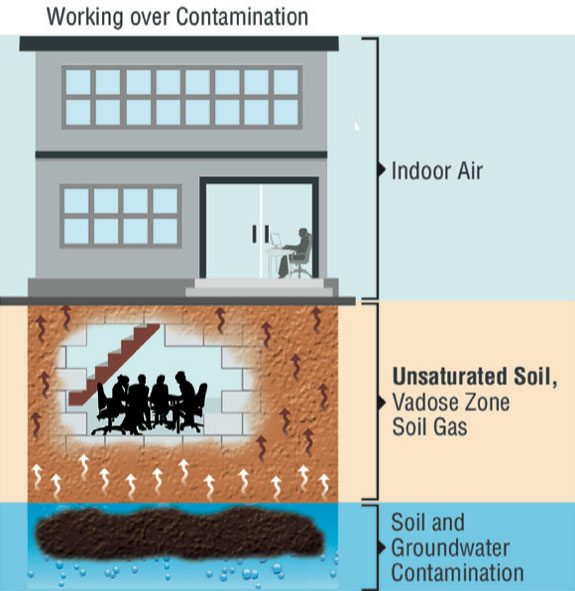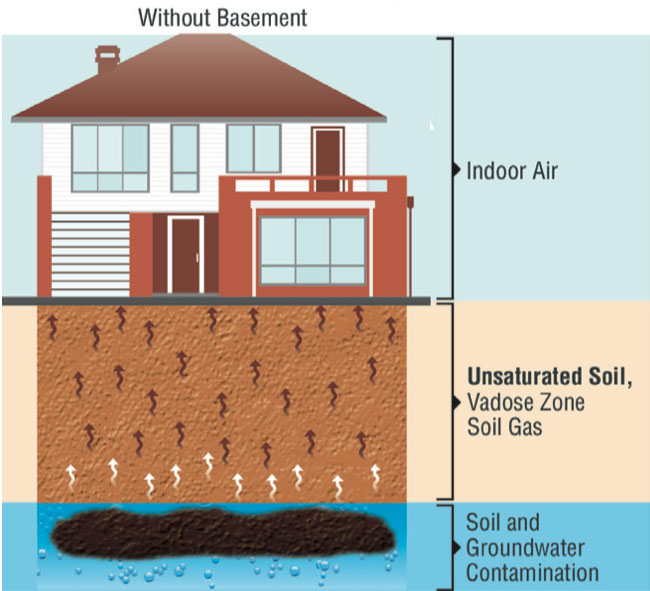VAPOR ENCROACHMENT/ VAPOR INTRUSION (VE/VI) STUDIES
Vapor Encroachment (VE) and Vapor Intrusion (VI) have become an area of growing concern when conducting environmental due diligence. The background of the vapor issue involves the degradation of contaminants in the soil/groundwater. As these contaminants “break-down” they can volatize into a gaseous state which in turn can migrate into structures through cracks in the foundation and other areas and accumulate within a building. If enough of these compounds become trapped within a building, they can cause adverse health effects to the occupants.
A potential purchaser has more to be concerned about than the lending institution commissioning a Phase 1 report. Especially in states which have strict liability laws governing environmental impacts. The responsibilities to address these impacts are directed at the owner of a property who may be considered the responsibly party (even for impacts caused before they took ownership).
Vapor Encroachment (VE)
Vapor Encroachment (VE) is defined as the potential for the presence or likely presence of hazardous chemicals that may impact the property. VE can stem from historical operations such as dry-cleaners and gasoline stations that either existed at the subject site or adjacent sites located within a close proximity. Soil Gas Vapor (SGV) is the process of sampling under a building to determine if any vapors are present.
Vapor Intrusion (VI)
Vapor Intrusion (VI) indicates that potential vapors may be present inside a structure. Many times, this is the result of a potential vapor encroachment concern that is raised in a phase one ESA. Upon discovery of a VE, air testing inside the building will aide in determining if a VI is present and has risen to the level of presenting indoor air quality (IAQ) issues for building occupants.
The newly released ASTM-1527-21 ESA standard requires that vapor encroachment be discussed within the report. The MECC staff is trained in identifying if a vapor concern may be present and has assisted our clients in evaluating this potential impact.
A four-tiered guideline outlines the steps recommended to determine if a VI issue exists. The first two tiers are referred to as the screening stage, followed by Tier 3 which outlines investigation and finally, tier 4 is the mitigation stage. As in most tiered scenarios, the cost and complexity of determining a VI issue increases as each tier is required. Many sites can be eliminated as a threat by researching the first two tiers. Some sites will require more advanced tiers to eliminate a VI threat.
The American Society of Testing Materials (ASTM) released the ASTM E-2600 standard on how to approach VI. This is beyond the scope of the ASTM E1527-21 standard but can aide clients in determining if such a condition exists.




